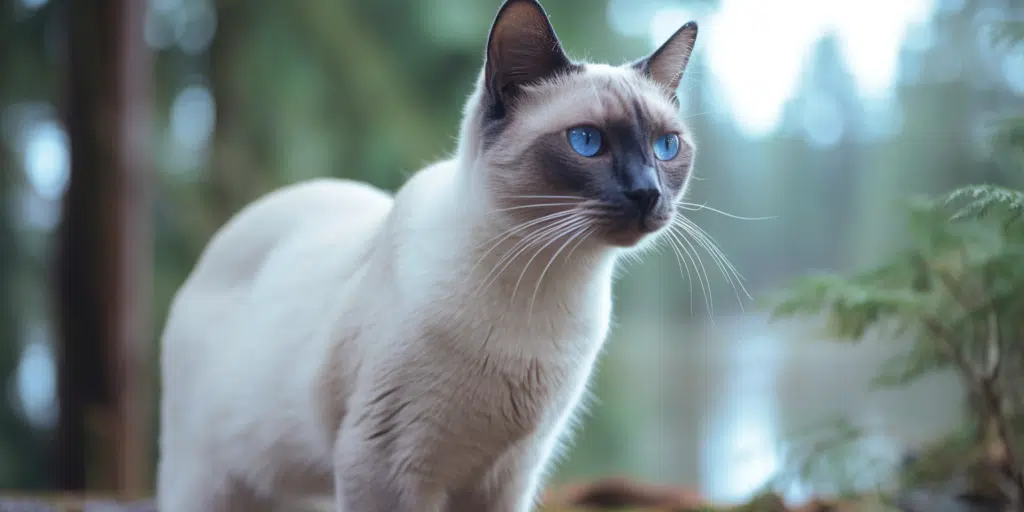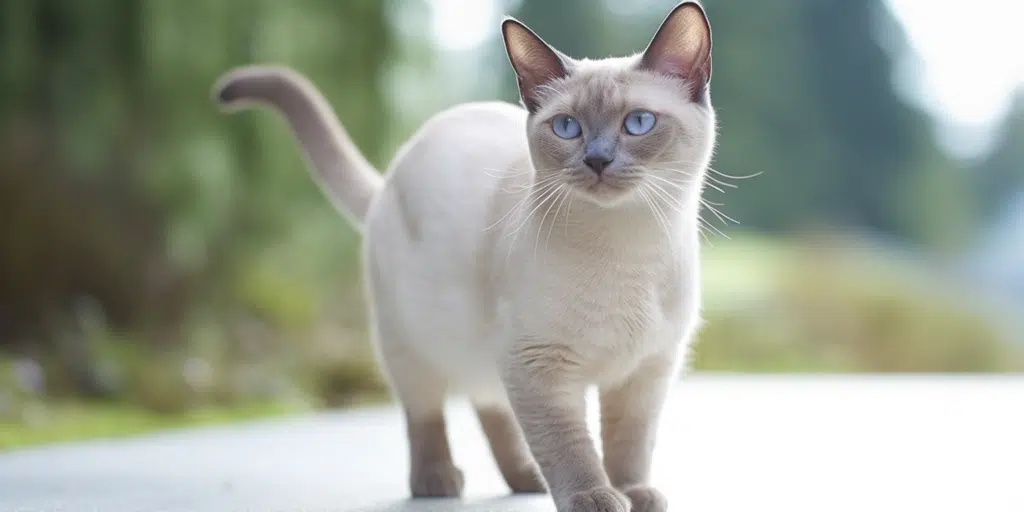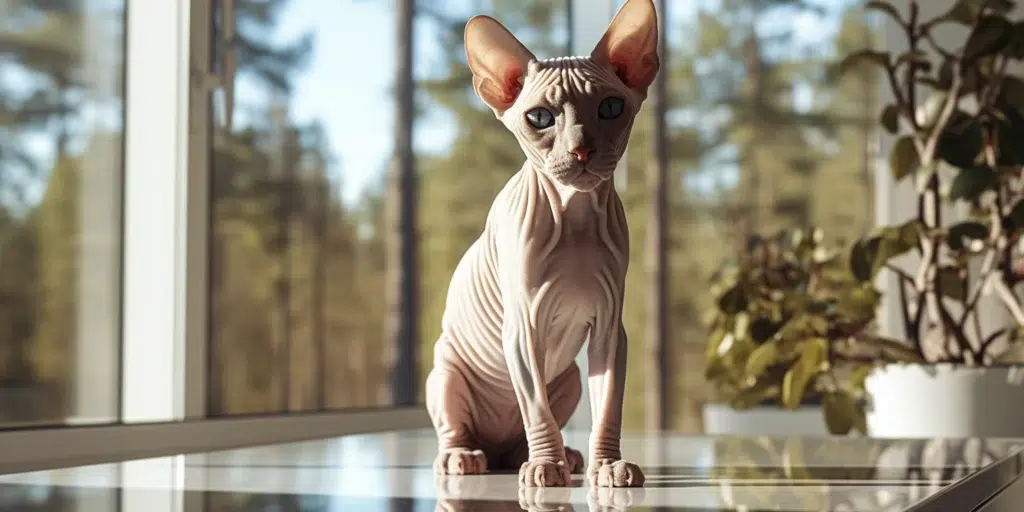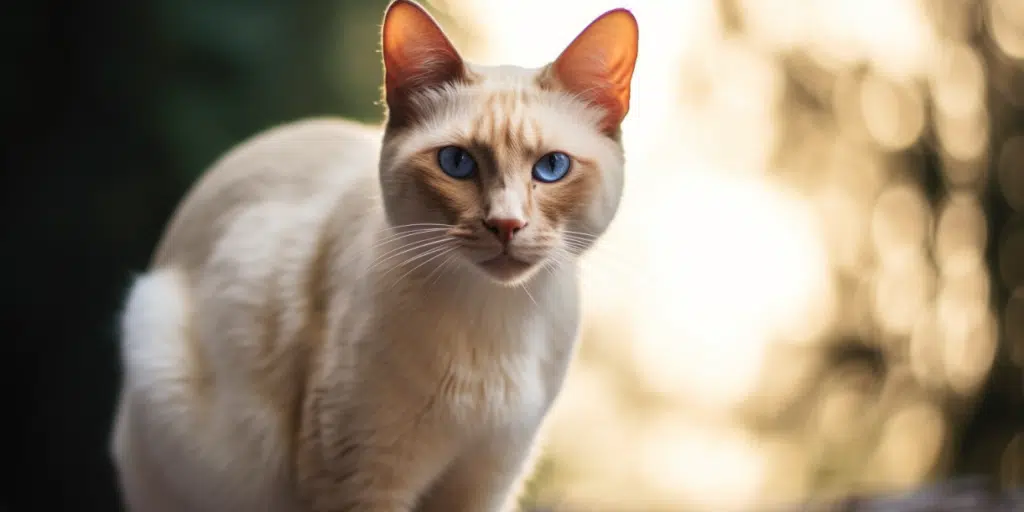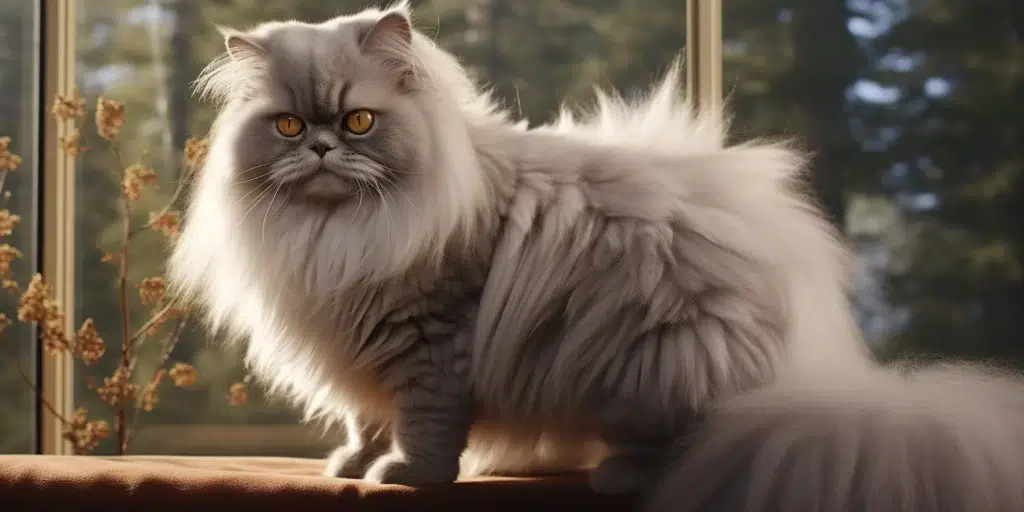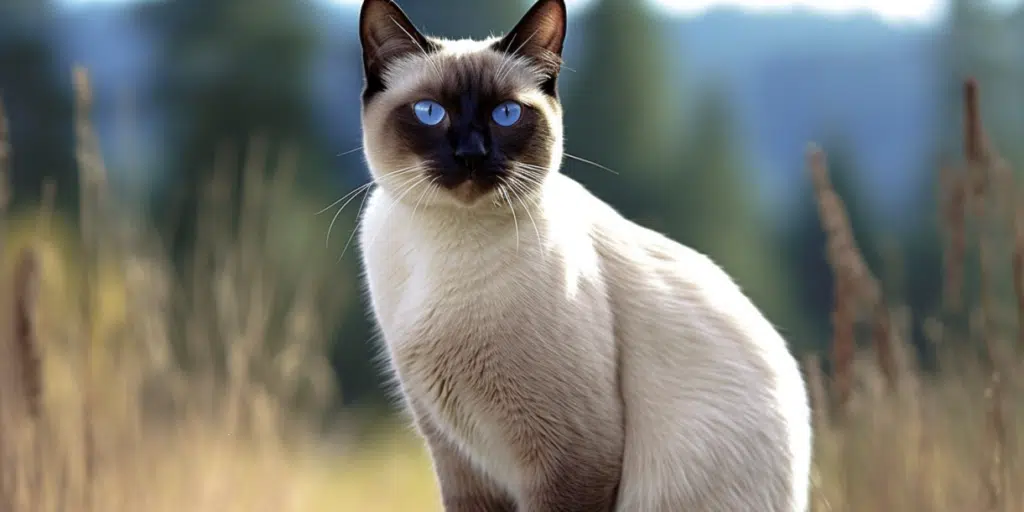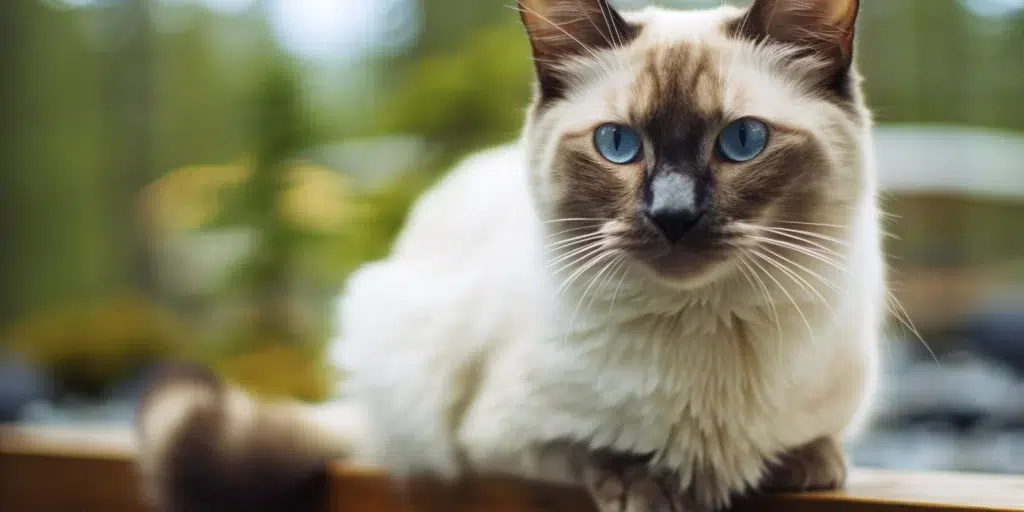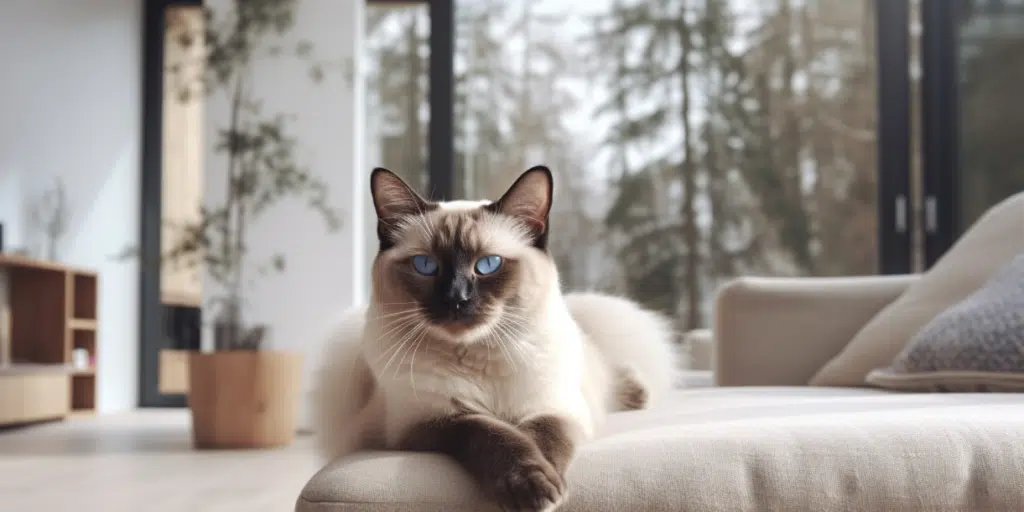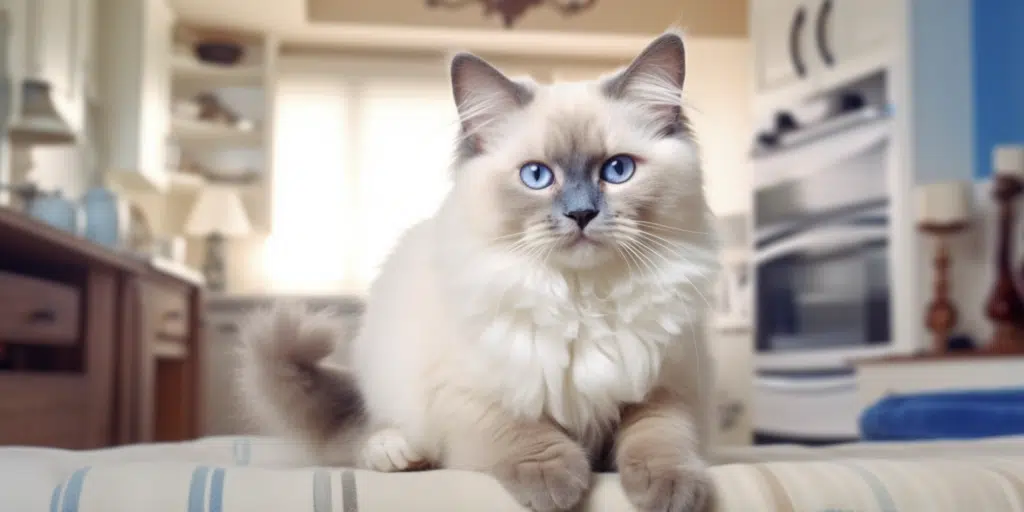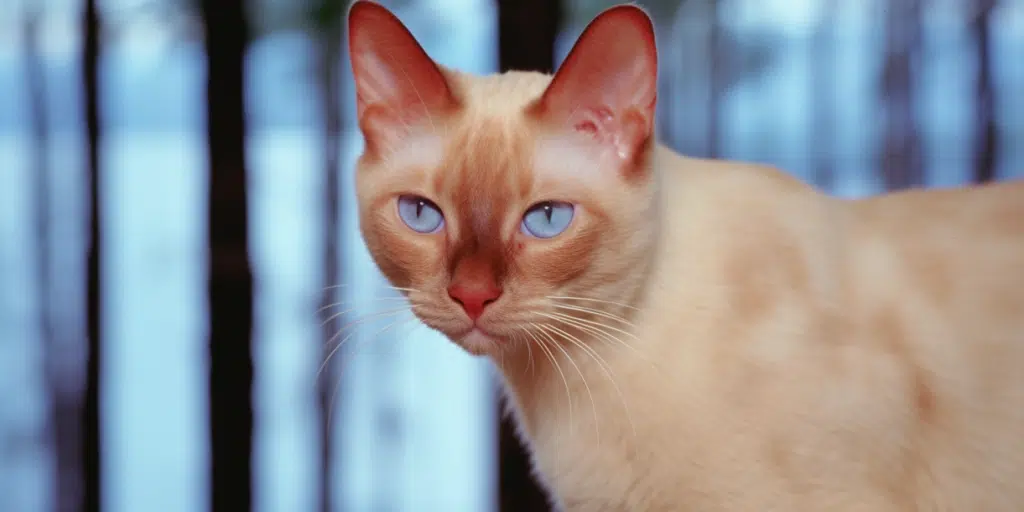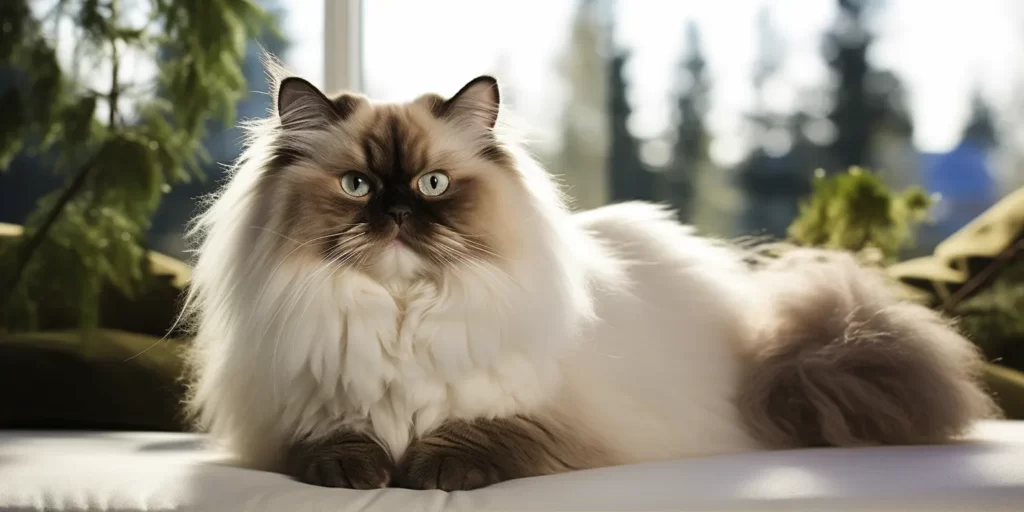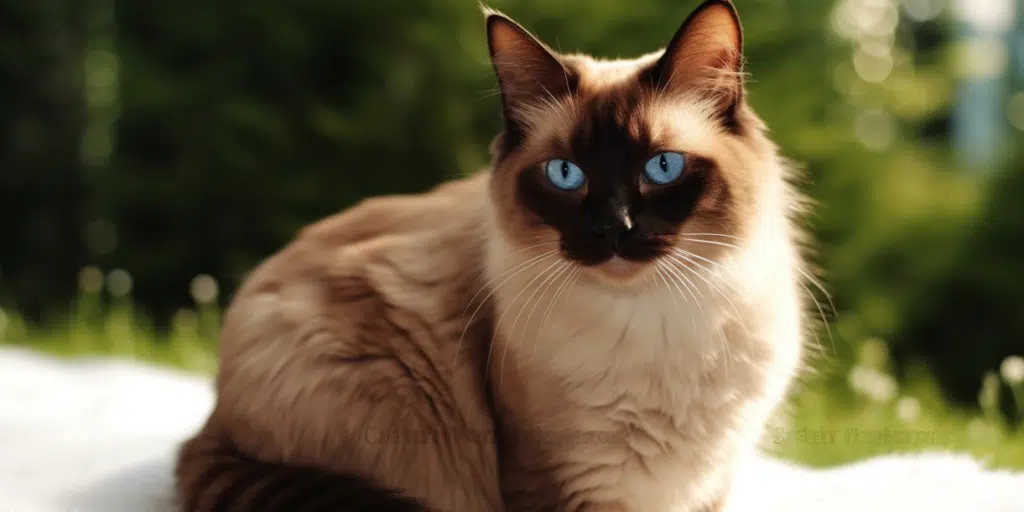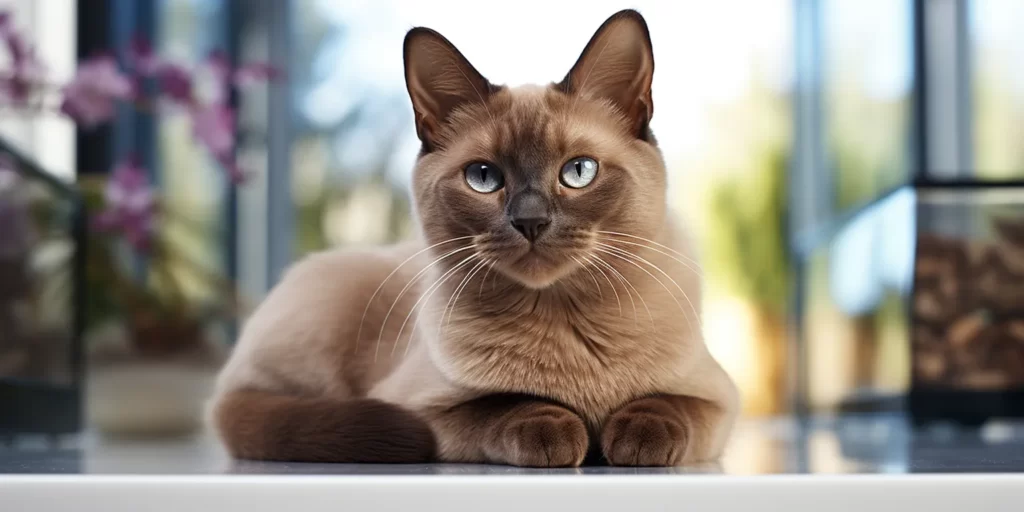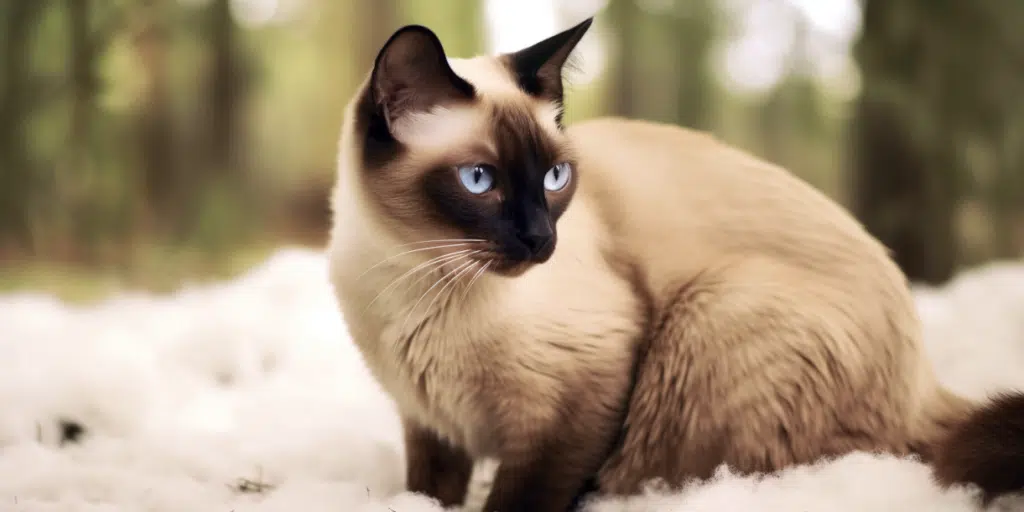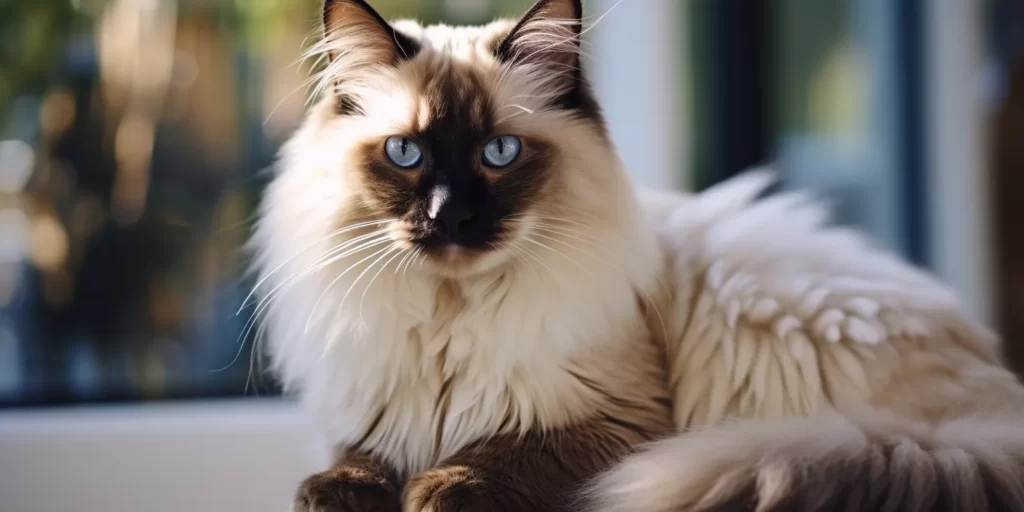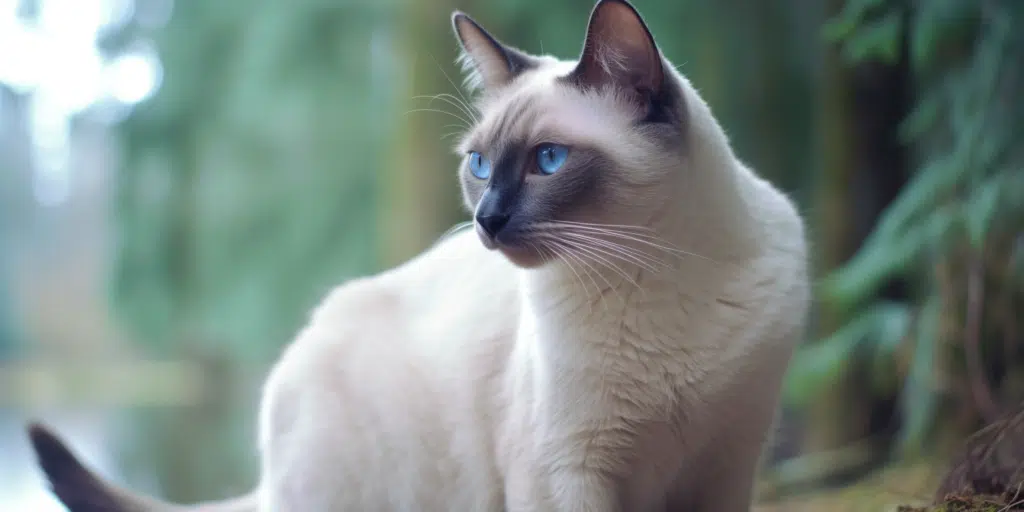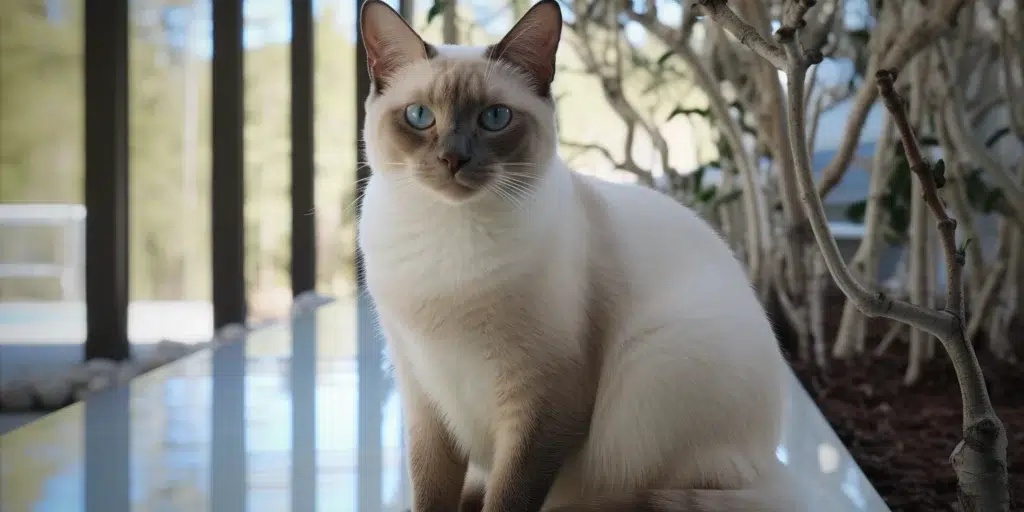When it comes to choosing a feline companion, the breed is as important as the personality. The Siamese cat, with its sleek lines and expressive almond-shaped eyes, is one of the most recognizable breeds in the world.
Siamese cats are known for their social nature, vocal personalities, and striking features, but how do they compare to other cat breeds? If you’re weighing your options for adding a feline friend to your family, you might be considering how the Siamese stands against other breeds in terms of size, personality, and care requirements.
As we delve into comparisons between the Siamese and other popular breeds like the Snowshoe, Sphynx, and Persian, we’ll uncover the unique qualities that make each cat suitable for different types of owners and living environments.
This breed charms many with its energetic yet loving nature. Whether you’re drawn to the Siamese or you’re exploring other breeds, this comparison will highlight the differences and similarities that could help you make an informed decision.
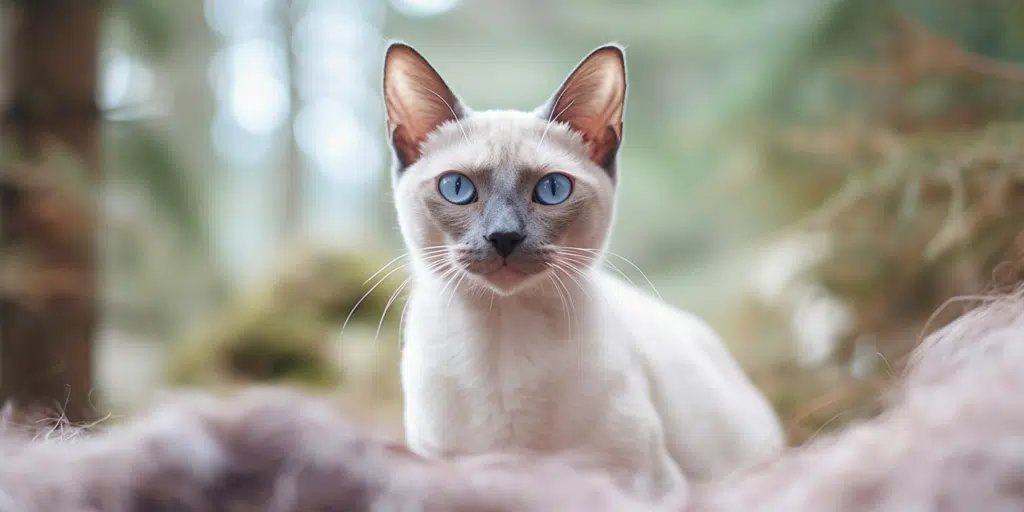
Siamese Vs Snowshoe
The Siamese and Snowshoe cats share a striking resemblance, perhaps because the Snowshoe breed originated from Siamese stock. Both breeds boast a similar coloration pattern, with darker points on the ears, face, paws, and tail.
However, Snowshoes are distinguished by their unique white feet, which look like they’ve just trodden through fresh snow. When comparing the Siamese to the Snowshoe, it is essential to consider that despite their similar origins, they have differences in body shape, weight, and even personality.
The Siamese typically exhibits a more slender build and traditionally weighs slightly more than the Snowshoe, especially in males. This can affect how they carry themselves and interact with their environment. In terms of personality, both breeds are high on the affection scale, making them excellent companions.
They are both recognized for their vocal nature, though Siamese cats might out-chatter their Snowshoe cousins. Movement-wise, Siamese cats generally exhibit a graceful and agile quality, while Snowshoes may exhibit a more athletic form of play and exploration.
Despite their shared lineage, these two breeds cater to different preferences in pet owners, particularly when it comes to energy levels and lifestyle suitability. Here’s a comprehensive comparison to visualize their key characteristics:
| Siamese | Snowshoe | |
|---|---|---|
| Average height (Male): | 8-11 inches | 8-13 inches |
| Average weight (Male): | 10-15 lb | 7-14 lb |
| Lifespan: | 15 years | 14-20 years |
| Exercise: | Medium-High | High |
| Shedding Level: | Low-Medium | Low-Medium |
| Affection Level: | High | High |
| Energy Level: | Medium-High | High |
| Trainability: | Medium-High | Medium |
Siamese Vs Sphynx
The contrast between the Siamese and Sphynx breeds could not be more striking. While the Siamese cat boasts a sleek coat with well-defined points, the Sphynx is famous for its nearly hairless appearance, which draws attention to its muscular build and wrinkled skin.
This lack of fur on the Sphynx means that shedding isn’t an issue, unlike the Siamese, which has a low to medium shedding level.
Another critical difference lies in weight and size. The Siamese cat is generally slimmer and might appear more refined than the Sphynx, which can have a heftier appearance despite a similar weight range.
When it comes to temperament, both breeds share high levels of affection and energy, but the Sphynx is notorious for its extroverted and clownish behavior, often seeking out warmth and attention from humans.
Due to their lack of a fur coat, Sphynx cats require regular bathing to remove the buildup of oils on their skin, while the short coat of the Siamese is lower maintenance. They both may require similar levels of exercise and mental stimulation, given their active and curious natures. Here is a succinct overview:
| Siamese | Sphynx | |
|---|---|---|
| Average height (Male): | 8-11 inches | 8-10 inches |
| Average weight (Male): | 10-15 lb | 8-14 lb |
| Lifespan: | 15 years | 9-15 years |
| Exercise: | Medium-High | High |
| Shedding Level: | Low-Medium | None |
| Affection Level: | High | High |
| Energy Level: | Medium-High | High |
| Trainability: | Medium-High | Medium-High |
Siamese Vs Persian
When comparing the Siamese to the Persian, we encounter a stark contrast in both appearance and demeanor. The Persian is opulently coated with a dense fur that requires daily grooming, contrasting sharply with the sleek, low-maintenance coat of the Siamese.
These grooming requirements reflect the Persian’s higher shedding level as opposed to the Siamese’s lower shedding nature.
Stature and energy levels present another distinctive comparison, with Persians typically carrying a more robust and rounded figure, often sedentary in contrast to the active Siamese. The Persian breed is known for its calm and placid temperament, usually preferring a serene environment, which differs from the vivacious and playful nature of the Siamese cat.
Both breeds are renowned for their affectionate ways, although the Siamese is likely to be more vocal and demanding of attention, while Persians may quietly seek out a warm lap on which to rest. Here’s a quick comparison table to summarize their differences and similarities:
| Siamese | Persian | |
|---|---|---|
| Average height (Male): | 8-11 inches | 10-15 inches |
| Average weight (Male): | 10-15 lb | 7-15 lb |
| Lifespan: | 15 years | 12-17 years |
| Exercise: | Medium-High | Low-Medium |
| Shedding Level: | Low-Medium | High |
| Affection Level: | High | High |
| Energy Level: | Medium-High | Low-Medium |
| Trainability: | Medium-High | Low |
Siamese Vs Birman
When contrasting the Siamese with the Birman cat, we see that both breeds share a similar color-point pattern, expressive blue eyes, and a friendly disposition. However, the Siamese tends to be more slender and angular in appearance, whereas the Birman is stockier and plusher.
A key difference can also be found in the texture of their coats; the Siamese has a short, sleek coat while the Birman flaunts a longer, silkier coat that requires more grooming, even though both are considered low to medium shedders.
Birmans are generally a bit smaller and lighter than Siamese cats, which may influence the cat’s physicality and presence. As for their energy levels, Birmans are typically more laid-back, making them a good candidate for those who appreciate a calmer, yet still affectionate and engaging cat.
The Siamese, with its energetic and sometimes mischievous behavior, suits an owner who enjoys an active engagement with their pet.
These two breeds both promise high levels of affection, although the Siamese is known for being particularly vocal and demanding of attention, while the Birman may be more gentle and reserved in their requests for cuddles. Here’s a table to help you compare the two breeds side by side:
| Siamese | Birman | |
|---|---|---|
| Average height (Male): | 8-11 inches | 8-10 inches |
| Average weight (Male): | 10-15 lb | 7-12 lb |
| Lifespan: | 15 years | 9-15 years |
| Exercise: | Medium-High | Medium |
| Shedding Level: | Low-Medium | Low-Medium |
| Affection Level: | High | High |
| Energy Level: | Medium-High | Medium |
| Trainability: | Medium-High | Medium |
Siamese Vs Thai Cat
The Siamese and Thai cat are often confused, and for a good reason. The Thai cat is essentially the traditional or “old-style” Siamese, featuring a more moderate body type than the modern Siamese but with similarities in coloration and personality traits.
The main differences between these two breeds are subtle and mainly lie in their body shape and size; the Thai cat generally has a rounder body and head, giving it a more robust look compared to the lithe and fine-boned Siamese.
In terms of temperament, both breeds are known for their high energy levels, intelligence, and vocalness, making them good choices for owners ready to engage actively with their pets.
They both require exercise and mental stimulation to stay content and tend to form strong bonds with their humans, reflected in their high affection levels.
Considering that the Thai cat is somewhat like the original progenitor of the Siamese, many of the care requirements, such as grooming and diet, are quite similar. The comparison table below highlights the distinctions and similarities between these two charismatic breeds:
| Siamese | Thai Cat | |
|---|---|---|
| Average height (Male): | 8-11 inches | 8-11 inches |
| Average weight (Male): | 10-15 lb | 10-15 lb |
| Lifespan: | 15 years | 15-20 years |
| Exercise: | Medium-High | Medium-High |
| Shedding Level: | Low-Medium | Low-Medium |
| Affection Level: | High | High |
| Energy Level: | Medium-High | Medium-High |
| Trainability: | Medium-High | Medium-High |
Siamese Vs Ragdoll
When comparing the Siamese with the different Ragdolls, several striking differences become apparent. Ragdolls are known for their gentle and docile nature, often described as “puppy-like” due to their tendency to go limp when held.
The Ragdoll is one of the larger cat breeds, with a stocky build and semi-long fur, which contrasts with the slender and short-coated Siamese.
While the Siamese is renowned for its energetic demeanor and love for play, the Ragdoll tends to be calmer and enjoys lounging around the home. Both breeds, however, are highly affectionate and thrive on human company.
The Ragdoll’s coat does require regular grooming despite their low to medium shedding level, which is similar to the Siamese. Exercise needs for the Ragdoll are typically less intense than for the more active Siamese, making the Ragdoll a good companion for those who live a more sedentary lifestyle.
Despite their physical and personality contrasts, both the Siamese and Ragdoll can be excellent pets for families or singles as long as their specific needs and natures are respected. Here’s how they compare across various characteristics:
| Siamese | Ragdoll | |
|---|---|---|
| Average height (Male): | 8-11 inches | 9-11 inches |
| Average weight (Male): | 10-15 lb | 10-15 lb |
| Lifespan: | 15 years | 12-15 years |
| Exercise: | Medium-High | Low-Medium |
| Shedding Level: | Low-Medium | Low-Medium |
| Affection Level: | High | High |
| Energy Level: | Medium-High | Low-Medium |
| Trainability: | Medium-High | Medium |
Siamese Vs Himalayan
The Siamese cat and the Himalayan share some similarities due to the Himalayan’s Siamese ancestry which contributes to their color point pattern.
What sets them apart significantly, though, is the Himalayan’s long, luxurious coat, which requires far more grooming and care due to its high shedding level, unlike the short-coated Siamese.
The Himalayan breed usually presents a more relaxed demeanor, with lower energy levels compared to the vivacious Siamese. This difference can make the Himalayan a better fit for someone seeking a quieter and less active feline companion.
Both breeds express high affection levels towards their humans, although the Himalayan’s are often said to be sweet and even-tempered, while the Siamese cat’s affection often comes with a side of spirited vocalization and playfulness.
Given these attributes, the decision between a Siamese and a Himalayan largely depends on how much time and energy an owner wishes to invest in grooming and interactive play. Here is how the two breeds line up in a head-to-head comparison:
| Siamese | Himalayan | |
|---|---|---|
| Average height (Male): | 8-11 inches | 10-12 inches |
| Average weight (Male): | 10-15 lb | 7-12 lb |
| Lifespan: | 15 years | 9-15 years |
| Exercise: | Medium-High | Low-Medium |
| Shedding Level: | Low-Medium | High |
| Affection Level: | High | High |
| Energy Level: | Medium-High | Low-Medium |
| Trainability: | Medium-High | Medium |
Siamese Vs Burmese
The Siamese and Burmese cats are two breeds often admired for their striking appearances and engaging personalities. While both breeds enjoy human companionship and exhibit high affection levels, there are notable differences between them that potential owners should consider.
The Burmese cat tends to have a more compact and muscular build than the Siamese, which is more slender and refined in stature.
One of the distinctive features of the Burmese breed is its life expectancy, which often surpasses that of the Siamese. Burmese cats tend to live longer, sometimes reaching up to 25 years of age. This extended lifespan can be a significant commitment and, therefore, a factor to be considered by potential cat owners.
Additionally, the Burmese have a high energy level, similar to the Siamese, suggesting that both breeds require an environment where they can play and explore to their heart’s content.
Despite these similarities in energy and affection, the Burmese tend to shed less than the Siamese, making them perhaps more suitable for owners who prefer minimal grooming responsibilities. To give a clearer picture of how these two delightful breeds compare, here’s a succinct comparative table:
| Siamese | Burmese | |
|---|---|---|
| Average height (Male): | 8-11 inches | 9-13 inches |
| Average weight (Male): | 10-15 lb | 8-12 lb |
| Lifespan: | 15 years | 18-25 years |
| Exercise: | Medium-High | High |
| Shedding Level: | Low-Medium | Low |
| Affection Level: | High | High |
| Energy Level: | Medium-High | High |
| Trainability: | Medium-High | High |
Siamese Vs Balinese
When put side by side with the Balinese cat, the Siamese shows a close kinship, as the Balinese is essentially a long-haired variety of the Siamese. They share the same svelte body structure and have similar personalities in terms of their affectionate nature and high energy levels. Both breeds also possess the striking color-point patterns and vivid blue eyes, hallmark traits of their shared lineage.
The key difference between them lies in the length of their coat. While Siamese cats have a short, easy-to-maintain coat, the Balinese wear a medium-length coat with a fine texture that gives a more flowing, elegant appearance.
This difference in coat length accounts for the Balinese’s slightly higher shedding level compared to the Siamese. Owners considering a Balinese should be prepared for a bit more grooming to keep their fur in pristine condition.
With their chatty and sociable dispositions, both the Siamese and Balinese cats make for delightful companions that love being the center of attention. Here is a comparative table to show how they fare against one another:
| Siamese | Balinese | |
|---|---|---|
| Average height (Male): | 8-11 inches | 8-11 inches |
| Average weight (Male): | 10-15 lb | 12-15 lb |
| Lifespan: | 15 years | 18-22 years |
| Exercise: | Medium-High | High |
| Shedding Level: | Low-Medium | Medium |
| Affection Level: | High | High |
| Energy Level: | Medium-High | High |
| Trainability: | Medium-High | High |
Siamese Vs Tonkinese
When comparing the Siamese cat with the Tonkinese, we look at two breeds with an intertwined history. The Tonkinese, a breed created from the Siamese and the Burmese, exhibits aspects of both breeds, with moderate physical features and a sociable character.
Unlike the extreme slimness of the Siamese, the Tonkinese has a more moderate, muscular build, often described as “mink-like” in texture with a glistening sheen.
Although the Tonkinese generally have a lower body weight range compared to the Siamese, both are agile and active cats that enjoy interactive play. The energy levels of the Tonkinese are typically high, yet they are known for being slightly less vocal than the famously talkative Siamese.
As for affection, the Tonkinese and Siamese both rate highly, enjoying close contact with their favorite humans.
Since the heights and lengths appear to have been entered incorrectly for the Tonkinese, we’ll focus on the shared and accurate attributes in our comparative overview. Let’s examine the sure traits between the Siamese and Tonkinese through this comparison table:
| Siamese | Tonkinese | |
|---|---|---|
| Average height (Male): | 8-11 inches | (Data Error) |
| Average weight (Male): | 10-15 lb | 8-12 lb |
| Lifespan: | 15 years | (Data Error) |
| Exercise: | Medium-High | Medium |
| Shedding Level: | Low-Medium | Low |
| Affection Level: | High | High |
| Energy Level: | Medium-High | Medium |
| Trainability: | Medium-High | Medium-High |
Conclusion
As we reach the end of our comparative journey, it’s clear that while the Siamese cat has its unique attractions and quirks, other breeds like the Snowshoe, Sphynx, and Persian offer a different array of features and temperaments that might better suit individual lifestyles and preferences.
Whether you’re drawn to the vocal and social Siamese, the robust and quirky Sphynx, the athletically inclined Snowshoe, or the placid and plush Persian, each cat is capable of providing companionship and love.
Remember, no matter the breed, every cat is an individual with its own personality traits and needs. The key to a happy relationship with your feline friend is understanding these characteristics and ensuring that they align with your own lifestyle and expectations.
If you’re considering a Siamese or any other breed, take the time to interact with the cats, research, and, most importantly, consider adopting from a shelter or rescue. Not only will you be gaining a wonderful companion, but you’ll also be providing a loving home to a pet in need.
